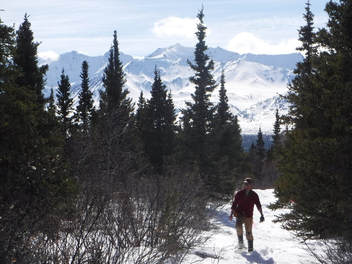Sam Sonnega
I am broadly interested in the intersection between animal behavior, physiology, and ecology. My MSc work will focus on this intersection in snowshoe hares (Lepus americanus), which I study in the Kluane region of the Yukon Territory. Snowshoe hare populations rise and fall with a regular period between population peaks of 8-11 years. This well-known cycle is one of the most striking features of the North American boreal forest. As the hare population begins to decline, major predator populations increase with a lag of 1-2 years behind the hares. Predators can account for up to 95 percent of hare mortality during this time (not a great time to be a hare). Under such disparate year to year changes in predation risk, hares may be able to respond with changes in behavior, physiology, and reproduction as trade-offs in favor of increased survival. By collecting physiological, energetic, and behavioral data over a period encompassing a cyclic peak and decline, we will be able to show the degree to which these yearly and seasonal changes are occurring. Taken all together, this will broaden the understanding we have of how predators influence prey in cyclic systems.
|
Education |
|
Contact:
email: [email protected]
email: [email protected]
